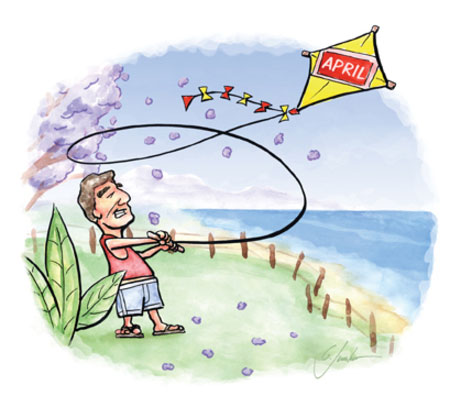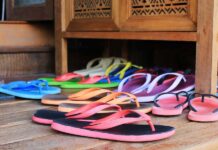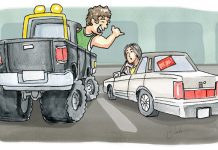Tom Stevens | Illustration by Guy Junker
 Maui has become so widely recognized that Islanders traveling elsewhere rarely field the old questions anymore.
Maui has become so widely recognized that Islanders traveling elsewhere rarely field the old questions anymore.
- “Do you live in a grass house?”
- “Is it safe to drink the water?”
- “Does the ocean go all the way around the island?”
These days we’re more likely to be asked which celebrities we’ve seen or where the best secret beach is. Now and then, though, one of the old questions pops back up. My favorite:
“Don’t you miss the seasons?”
There are a couple of answers to that. The first is an emphatic “No!” . . . but we were raised here not to be curt. Instead, I usually explain that we do have four seasons; they’re just “subtler” than the seasons in other places.
The next question is both predictable and understandable, given how little Maui’s weather seems to vary. “But how can you tell them apart?”
Other places have certain ironclad seasonal indicators: the temperature goes way up or way down; birds fly north or south; things freeze or thaw; people wear capris or parkas. Depending on the season, trees and shrubs display buds, flowers, leaves or bare branches.
Denizens of the remoter parts of our hemisphere know spring is on the way when masochistic little flowers pop up through the snow, bull elk are molting, and the swallows come back to Capistrano.
Here we don’t have all that, so we study the wind. I don’t mean simply holding up a hand and saying: “Hmmm . . . this feels like a summer wind,” or “This wind seems equinoctial.” No, it’s more specific. We study what the wind is carrying.
If the wind is blowing, you know you’re on Maui. But if it’s carrying mango pollen, jacaranda petals, and the bleating of baby goats, you can surmise that spring has arrived. If the wind is carrying red dust, shower-tree petals and accents of guava and yellow ginger, it’s probably summer.
In autumn, we hear golden plovers whistling and dry haole koa seedpods rattling in the breeze. And the winter wind carries fallen plumeria leaves and ghostlike puffs of whale breath. See? Easy.
Of course, not every vernal indicator is wind-related. High school track meets are usually a sign of spring, as are Easter- egg hunts, emerald-green pastures, and muddy, choppy surf.
The island’s last humpback whales depart in spring for Alaska, as do the aforementioned golden plovers and a fair number of Maui “snowbirds.” Arrivals include vacationing pro football players, baseball teams from Japan and the occasional Brazilian supermodel.
But for the most part, the wind remains the best indicator. On Maui, spring winds are by far the year’s fiercest (one reason windsurfing contests occur at this time of the year). Fiercest, that is, if you don’t count big kona storms that blow through in the winter.
Kona storms? That’s a story for another season. Right now it’s spring on Maui. Hold onto your hats!





